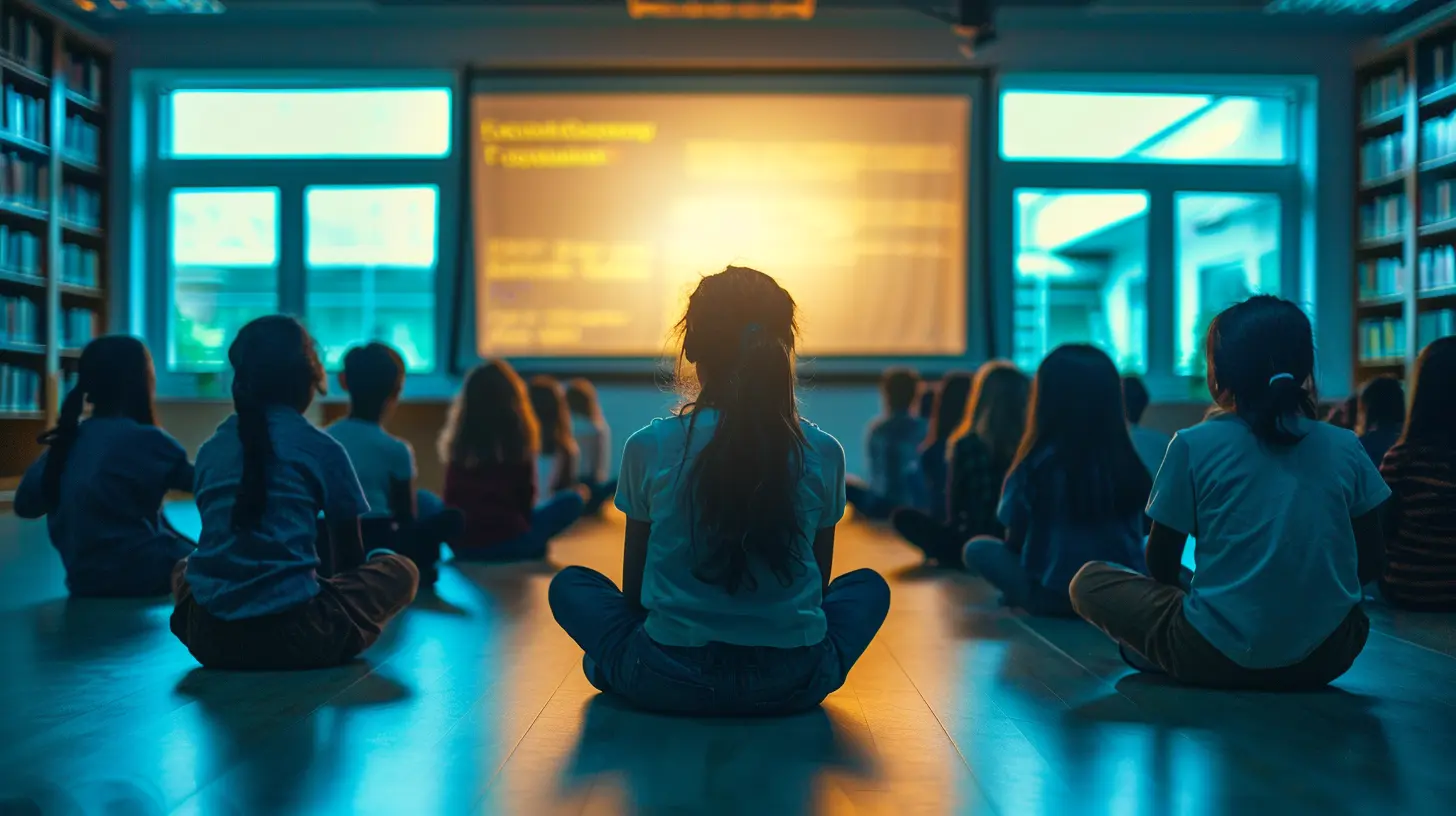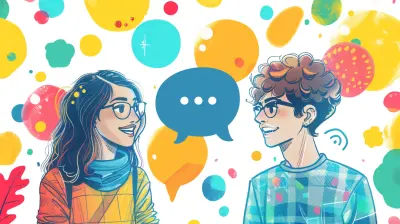The Benefits of Experiential Learning in Increasing Engagement
6 October 2025
When was the last time you really learned something just by reading about it? Probably not recently, right? Most of us retain new ideas better when we roll up our sleeves and actually do something with that knowledge. That’s where experiential learning comes in—and it's quickly becoming a game-changer in education.
You might be thinking, “Wait, isn’t all learning experiential in some way?” Well, not quite. Experiential learning takes things several steps further. It’s all about learning by doing, reflecting, and connecting concepts to real-world scenarios. And when it comes to increasing student engagement, this type of hands-on learning is worth its weight in gold.
Let’s break it down together.
What Is Experiential Learning, Really?
At its core, experiential learning is just what it sounds like—learning through experience. Instead of simply reading textbooks or watching lectures, students immerse themselves in real-world tasks. Think simulations, projects, labs, internships, field trips, role-playing, or even starting a mini-business in class.It’s based on the work of David Kolb, who mapped out a learning cycle involving four stages:
1. Concrete Experience – Doing the task.
2. Reflective Observation – Thinking back on what just happened.
3. Abstract Conceptualization – Making sense of it.
4. Active Experimentation – Trying it again differently.
This cycle repeats itself, helping learners deepen their understanding every time around.
Why Engagement Matters in Learning
Let’s talk about the E-word—engagement. It’s more than just paying attention. When students are engaged, they’re curious, motivated, and emotionally invested. They’re not just memorizing; they’re exploring, questioning, and connecting.Unfortunately, traditional methods like lectures and rote memorization often fail to spark this kind of interest. Students may be physically present but mentally checked out. That’s where experiential learning shines. It flips the switch from passive to active learning.
How Experiential Learning Boosts Engagement
1. Hands-On Involvement Sparks Curiosity
Ever notice how kids are glued to activities like building LEGOs or playing Minecraft? That’s curiosity in action. Experiential learning taps into that same kind of energy by letting students do something, rather than sit back and listen.When learners work on real projects, they ask more questions. They want to find answers. Curiosity isn’t just piqued—it drives the whole process.
2. Real-World Connections Make Learning Stick
Let’s face it—students often wonder, “When will I ever use this?” But when they’re applying formulas to design a bridge or using history to build a museum exhibit, the “why” behind the lesson becomes crystal clear.These real-world links turn abstract ideas into relatable, meaningful concepts. That connection boosts memory—and more importantly, relevance.
3. Failure Becomes a Learning Opportunity
In experiential learning, messing up isn’t just accepted—it’s expected. And that’s a good thing.By reflecting on what didn’t work, students build resilience. They shift from “I failed” to “I learned something new.” This mindset change makes them more likely to take risks, ask questions, and stay actively involved in their learning journey.
4. Teamwork and Collaboration Build Social Engagement
Most experiential activities aren’t solo missions. They involve group work, discussions, debates, and shared problem-solving. This kind of interaction boosts not just academic engagement, but also social and emotional learning.Students learn how to communicate, delegate, and empathize—a kind of learning that’s tough to get from a multiple-choice test.
5. Personalized Learning Paths Keep Interest High
Experiential learning often offers students the freedom to choose how they approach tasks. Want to make a video instead of writing a report? Go for it. Prefer building a prototype over giving a speech? That works too.This flexibility allows learners to lean into their strengths and interests. And when students care about the how, they care a whole lot more about the what.
Real-Life Examples of Experiential Learning in Action
Project-Based Learning (PBL)
In PBL, students tackle a complex question or problem over several weeks. For example, a group may explore how to reduce their school’s carbon footprint. They’ll conduct research, interview experts, and create a comprehensive plan—which they then present to the school board.Talk about real stakes, right?
Internships and Job Shadowing
High school and college students gain firsthand experience in the workplace. They don’t just learn about the profession—they’re living it, one task at a time. That kind of exposure can ignite passion and direct career goals.Service Learning
Doing good while learning something new? That’s a win-win. Service learning blends community service with curriculum goals. Students might develop a marketing plan for a local nonprofit or tutor younger kids as part of a psychology course.Simulations and Role Play
Think model UN, mock trials, or business simulations. Role-playing helps students step into someone else's shoes, boosting empathy, critical thinking, and engagement.The Science Behind It: Why Experiential Learning Works
This isn’t just feel-good theory—it’s backed by research.- Retention Rates Soar – According to the learning pyramid model, people remember 90% of what they do, compared to just 10% of what they read.
- Increased Motivation – When learning feels real and relevant, students are more motivated. They strive harder and dig deeper because the learning has value.
- Better Critical Thinking – Reflecting on hands-on experiences helps students analyze, synthesize, and evaluate information more effectively.
Simply put, experiential learning aligns with how the brain is wired to learn—through doing, trial and error, and meaningful reflection.
Challenges? Sure. But They’re Worth Navigating
Let’s be honest—experiential learning isn’t always easy to implement. It takes time, planning, and sometimes extra resources. Teachers may need training. Classrooms might need to shift from rows of desks to flexible workspaces.But the payoff? So worth it.
Students who are engaged become lifelong learners. They develop skills that go far beyond test scores—like creativity, communication, and curiosity. They’re not just prepared for exams; they’re prepared for life.
Tips for Bringing Experiential Learning Into the Classroom
Feel inspired to give it a go? Here are a few ways to start:- Start Small – Try one experiential activity per month. Maybe a science experiment or a group project in history.
- Use What You Have – You don’t need fancy tools. Real-world problems and some creativity go a long way.
- Encourage Reflection – Experience without reflection is just an activity. Build in time for students to think about what worked, what didn’t, and what they learned.
- Connect to Standards – Align activities with existing learning goals so you’re still hitting your benchmarks.
- Be a Guide, Not a Dictator – Let students take the lead, even if things get messy. That’s where the magic happens.
Final Thoughts
Experiential learning is more than a trendy buzzword. It’s a powerful approach that gets students excited about what they’re learning, why they’re learning it, and how they can use it. It brings learning to life—and once you’ve tried it, there’s no going back.So the next time you're planning a lesson or thinking about how to boost student engagement, ask yourself: How can I let students experience this instead of just hear about it?
Chances are, the answer will transform your classroom.
all images in this post were generated using AI tools
Category:
Student EngagementAuthor:

Olivia Lewis
Discussion
rate this article
1 comments
Vito Good
Great article! I appreciate how you highlighted the key benefits of experiential learning. Engaging students through real-world experiences truly enhances their understanding and retention of knowledge. Thank you!
October 17, 2025 at 11:46 AM

Olivia Lewis
Thank you for your kind words! I'm glad you found the insights on experiential learning valuable.


